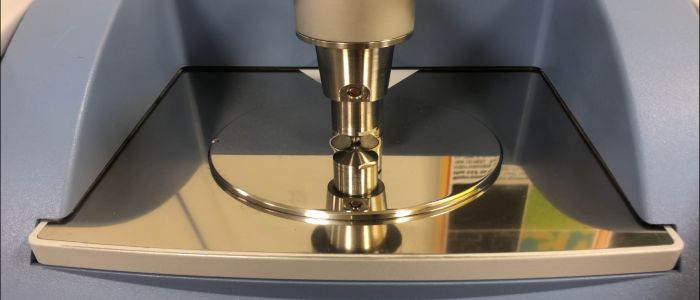Scientists develop ‘holy grail’ method to identify the ageing mosquitos which cause malaria
Published: 21 March 2022
Scientists at the University of Glasgow and partner institutes have developed an inexpensive, fast and simple way to identify the ageing mosquitos which transmit the deadly malaria parasite.
Scientists at the University of Glasgow and partner institutes have developed an inexpensive, fast and simple way to identify the ageing mosquitos which transmit the deadly malaria parasite.

The study – published today in Nature Communications and led by the University of Glasgow-Institute of Biodiversity Animal Health and Comparative Medicine (IBAHCM) and School of Chemistry, and the Ifakara Health Instititute (IHI) in Tanzania and the Institut de Recherche en Sciences de la Santé (IRSS) in Burkina Faso– presents a step change in our ability to accurately identify the age and species of malaria mosquitoes in wild populations, where it is critically important to be able to monitor their age, as only old mosquitoes can transmit the disease.
In 2020, there were an estimated 241 million cases of malaria worldwide, according to the WHO, killing around 627,000 people; and while there are vector controls in place to reduce the numbers of mosquitos that transmit the disease in certain parts of the world -such as insecticides or bed nets – the effectiveness of these interventions can be hard to measure.
In this study, scientists demonstrate a method of identifying the age and species of malaria mosquitos in wild populations by using infrared spectroscopy and artificial intelligence (AI).
By shining infrared light on individual mosquitos – which provides information on the chemical composition of the insect’s cuticle– scientists were able to quickly identify the chemical changes of ageing mosquitos using an AI algorithm and validate their age predictions on wild mosquitoes with current methods, achieving similar results.
Mrs Doreen Siria, lead author from IHI, said: “Only mosquitos that live long enough to develop malaria – around ten days – can transmit the disease, so knowing the age of a mosquito can help inform the risk of disease. Until now, the only way to know the age of a mosquito was via complex dissection to gauge the age of female mosquitos’ ovaries, a process which is expensive, time-consuming and can’t be done at scale.”
Mr Roger Sanou, lead author from IRSS, said: “This AI-driven infrared light technology requires a spectrometer currently costing around $20,000, which can be used as part of existing, routine malaria vector surveillance, and offers a way to quickly establish if current intervention measures to reduce mosquito numbers in the wild are working, something which isn’t currently possible.”
Dr Francesco Baldini, from the IBAHCM, said: “We believe this new method is greatly needed in the fight against malaria, a disease which continues to kill many people and children each year. While there are vector controls in place across the globe in areas of high mosquito populations, it’s difficult to measure whether these controls are working effectively. With this infrared technology, we have developed a tool which could be adopted within current mosquito control plans; has the potential to be scaled up for use across different areas; and would greatly help in testing new products and solutions against diseases transmitted by mosquitoes.
“We envision this approach could also be applied to other vectors and vector-borne diseases, from filariasis and chikungunya, to sleeping sickness and Zika; and could be used to evaluate the attempts to limit the expansion of invasive mosquito species across Europe and the United States”.
The study utilised a large dataset of 40,000 genetically and ecologically different individual mosquitoes from East and West Africa, spanning the three major malaria-transmitting species at different ages. The study measured mid-infrared spectroscopy signatures reflecting the biochemical signatures of each of these mosquitoes; and used machine learning to correctly identify both age and species of new mosquitoes.
The resulting computer models can be adapted and implemented in the field for vector surveillance.
Simon Babayan, from the IBAHCM, said: “The versatility of AI combined with the power of infrared spectroscopy opens huge opportunities for disease surveillance and rapid response. As these technologies become more accessible, we will move towards instantaneous data collection and analysis directly within, and potentially by, the communities that need to act on such information the most”.
Mario Gonzalez-Jimenez, from the School of Chemistry, added: “This work has shown that the same algorithms that allow us to recognise faces and objects in a photo are also able to identify the ways in which chemical compounds show their presence in a spectrum, even in samples as complex as a living being. We are witnessing how the use of AI is making possible chemical analyses that were unimaginable just a few years ago.”
The paper, ‘Rapid age-grading and species identification of natural mosquitoes for malaria surveillance,’ is published in Nature Communications The study was funded by the Medical Research Council (MRC) and the Engineering and Physical Sciences Research Council (EPSRC).
Enquiries: ali.howard@glasgow.ac.uk or elizabeth.mcmeekin@glasgow.ac.uk / 0141 330 6557 or 0141 330 4831
First published: 21 March 2022
<< March

